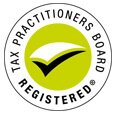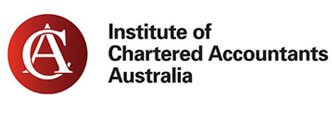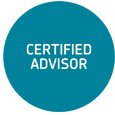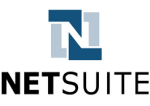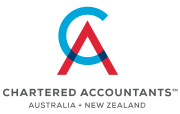
30 June Tax Planning
As we move towards the end of the 2021/22 financial year, there are a number of year-end income tax planning opportunities that may be available to optimise your tax position.
Temporary full expensing
Are you contemplating asset and equipment purchases? If so, consider getting in before 1 July to take advantage of temporary full expensing (TFE). TFE supports businesses and encourages investment, as eligible businesses can claim an immediate deduction for the business portion of the cost of an asset in the year it is first used or installed ready for use for a taxable purpose in your business (rather than depreciation deductions being spread out over a number of years). This improves cashflow which can be a big problem for small businesses in particular.
Eligible assets include most business-related assets including new or second-hand equipment, furniture, computers, machinery, vehicles etc. (note however that vehicle claims may be capped by the car limit).
Ineligible assets include certain primary production assets and buildings or other capital works.
You’ll be able to claim in 2021/22 if the asset is first used or installed ready for use between 7.30pm AEDT on 6 October 2020 and 30 June 2022. This has now been extended to 30 June 2023 (FY 2022/23). Any business with an aggregated turnover of less than $5 billion is eligible to use TFE.
Crystalise capital losses
Have you made capital gains in 2021/22? If so, in consultation with your advisors, it may be worth considering crystalising any capital losses you are currently sitting on. For background, if you have made a capital gain from your investments, it will be added to your other income and taxed at your marginal tax rate which could be as high as 45% if you hold the asset personally.
However, capital losses can offset capital gains and in doing so reduce your tax liability. This strategy may be considered for example where you are holding underperforming CGT assets which you and your advisors consider have little prospect of growth moving forward.
By contrast, if an underperforming asset has good potential for future growth, then you may not be inclined to sell it. Each scenario should be judged
on its own merits in consultation with your advisors.
By no means should tax be the sole driver of your investment decisions. Keep in mind that for CGT purposes a capital gain/loss generally occurs on the date you sign a contract, not when you settle on a property purchase.
If there is no contract of sale, the gain or loss occurs usually when you stop being the asset’s owner. For example, if you sell shares, the gain or loss happens on the date of sale. Knowing which financial year the gain/loss will be attributed to is important when tax planning.
Write-off bad debts
Businesses should review their aged debtors to determine if any debts are not recoverable. If so, by writing them off as bad debts before 1 July 2022, you may be able to claim a tax deduction for the full amount of the debt in 2021/22. For a debt to qualify as ‘bad’, there must be little or no likelihood of recovery. Records should be kept to demonstrate that you have taken reasonable steps to recover the debt prior to writing it off.
ATO warning of fake ABN and TFN scams
The ATO has just recently reported an increase in fake websites offering to provide tax file numbers (TFNs) and Australian Business Numbers (ABNs) for a fee, but then failing to provide the service – leaving taxpayers out of pocket.
The fake TFN and ABN services are typically advertised on social media platforms like Facebook, Twitter, and Instagram.
The advertisements offer to obtain your TFN or ABN for a fee. Instead of delivering this service, the scammer uses these fraudulent websites to steal both money and personal information.
It is free, quick and easy to use government services to apply for a TFN through the ATO, or apply for an ABN through the Australian Business Register (ABR).
ATO Assistant Commissioner Tim Loh said: “Scammers are constantly developing new ways to target the community, and we expect to see more of these malicious attempts to steal identity details in the lead up to tax time.”
In 2021, more than 50,000 people reported ATO impersonation scams with victims losing a total of more than $800,000.
“We are concerned about a recent increase in the number of victims reporting scams around TFN and ABN applications. We are also still seeing scammers impersonating the ATO, making threats, demanding the payment of fake tax debts or claiming a TFN has been ‘suspended’ due to fraud. Those who apply for a TFN or ABN through a tax agent should always check that the tax agent is registered with the Tax Practitioners Board. We are encouraging everyone to be on alert and take the time to remind family and friends to be on the lookout and stay safe online, so you don’t fall victim to a scam this tax time.”
Tips to protect yourself from scammers:
- Know your tax affairs – You will be notified about your tax debt before it is due. Check if you have a legitimate debt owed by logging into your myGov account via an independent search or by calling your tax agent if you have one (on a number sourced independently).
- Guard your personal and financial information – Be careful when clicking on links, downloading files or opening attachments. Only give your personal information to people you trust and don’t share it on social media.
- If you are unsure, don’t engage – If a call, SMS or email leaves you wondering if it is genuine, don’t reply. Instead, you should phone the ATO’s dedicated scam line 1800 008 540 to check if the communication is legitimate. You can also verify or report a scam online at ato.gov.au/scams. You can also visit ScamWatchExternal Link to get information about scams (not just tax scams).
- Know legitimate ways to make payments – Scammers may use threatening tactics to trick their victims into paying fake debts via unusual methods. For example, they might demand pre-paid gift cards or transfers to non-ATO bank accounts. To check that a payment method is legitimate, visit ato.gov.au/howtopay.
- Talk to your family and friends about scams – If you or someone you know has fallen victim to a tax-related scam, call the ATO as soon as you can.
Six super strategies to consider before 30 June
With the end of financial year (EOFY) fast approaching, now is a great time to boost your superannuation savings and potentially save on tax. Below are six superannuation strategies to consider before 30 June 2022.
Tip 1 – Use the carry forward concessional contribution rules
If you want to make up for lost time and make extra contributions to top up your superannuation balance, you may be able to use the carry forward concessional contribution rules (otherwise known as “catch-up concessional” rules) to make large concessional contributions this year without exceeding your concessional contribution cap.
This strategy can allow you to carry forward any unused concessional contribution cap amounts that have accrued since 2018/19 for up to five financial years and use them to make concessional contributions in excess of the general annual concessional contribution cap (currently $27,500 in 2021/22).
You can then make a concessional contribution using the unused carry forward amounts this financial year provided your total superannuation balance (TSB) at 30 June 2021 was below $500,000.
Tip 2 – Make a personal deductible contribution
Carry-forward contributions may also provide you with an opportunity to make higher amounts of personal deductible contributions in financial years where you may have a higher level of taxable income, for example, due to assessable capital gains.
But if you’re not eligible to use the carry forward rules to make a larger contribution, you can still boost your superannuation by making a personal deductible contribution up to the general concessional contribution cap.
It’s important to note that personal deductible contributions are only deductible if you meet all of the following conditions:
- You make the contribution to a complying superannuation fund
- You are at least age 18 when the contribution is made (unless you derived income from carrying on a business or from employment related activities)
- You make the contribution within 28 days after the month in which you turn 75
- You notify your superannuation fund trustee in writing of your intention to claim the deduction
- The notice must be given by the earlier of:> when you lodge your income tax return for the year the contributions were made, or
> the end of the financial year following the year the contributions were made
- The trustee of your superannuation fund must acknowledge receipt of the notice, and you cannot deduct more than the amount stated in the notice.
Tip 3 – Spouse contribution splitting
You can split up to 85% of your 2020/21 concessional contributions before 30 June 2022 to your spouse’s superannuation account if your spouse is:
- Less than the preservation age, or
- Between preservation age and age 64 (and you must declare they do not satisfy the ‘retirement’ condition of release).
This is an effective way of building superannuation for your spouse and can assist to manage your TSB which can have several advantages, including:
- Equalising balances to make best use of both of your transfer balance caps (TBC), which can maximise the amount you both have invested in tax-free retirement phase income streams.
- Optimising both of your TSBs to:> Access a higher non-concessional contribution (NCC) cap
> Allow access to use the carry-forward concessional contribution rules
> Utilise the work test exemption
> Qualify for a government co-contribution
> Qualify for a tax offset for spouse contributions
- Boosting Centrelink entitlements by transferring funds into a younger spouse’s accumulation account if your spouse is under age pension age.
Tip 4 – Superannuation spouse tax offset
If your spouse is not working or earns a low income, you may want to consider making an NCC into their superannuation account.
This strategy could benefit you both by boosting your spouse’s superannuation account and allowing you to qualify for a tax offset of up to $540.
You may be able to get the full offset if you contribute $3,000 and your spouse earns $37,000 or less pa (including their assessable income, reportable fringe benefits and reportable employer superannuation contributions).
A lower tax offset may be available if you contribute less than $3,000, or your spouse earns between $37,000 and $40,000 pa.
– Need help? You’ll need to meet certain eligibility conditions before benefitting from any of these strategies. Contact us before 30 June if you’re thinking about investing more in superannuation so we can help you decide which strategies are most appropriate to your circumstances.
Tip 5 – Maximise non-concessional contributions
Another way to boost your superannuation is to make an NCC with some of your after-tax income or savings.
The general NCC cap for 2021/22 is $110,000 and eligibility to utilise the cap depends on your TSB.
Although NCCs don’t reduce your taxable income for the year, you can still benefit from the low tax rate of up to 15% that is paid in superannuation on investment earnings. This tax rate may be lower than what you might pay if you held the money in other investments outside superannuation.
Tip 6 – Receive the government co-contribution
If you’re a low or middle-income earner earning less than $56,112 in 2021/22 and at least 10% is from your job or a business, you may want to consider making an NCC to superannuation before 1 July 2022. If you do, the Government may make a ‘co-contribution’ of up to $500 into your superannuation account.
The maximum co-contribution is available if you contribute $1,000 and earn $41,112 pa or less. You may receive a lower amount if you contribute less than $1,000 and/or earn between $41,112 and $56,112 pa.
Like the superannuation spouse tax offset, the definition of ‘total income’ for the purposes of the co-contribution includes assessable income, reportable fringe benefits and reportable employer superannuation contributions.
2022 Election Washup
Following the election of the new Labor federal Government on 21 May, there are a number of tax and superannuation proposals that they have announced or existing measures they have committed to that may impact you and your business moving forward. Some of course are subject to the passage of enabling legislation through the new Parliament.
Tax cuts
The incoming government has committed to the so-called Stage 3 tax cuts that the former government passed into legislation in 2018.
This will see the 37% tax bracket abolished, the top 45% bracket will start from $200,000 and the 32.5% rate will be cut to 30% for all incomes between $45,000 and $200,000. This is legislated to commence from 1 July 2024.
Multinational tax crackdown
This will involve a four-pronged approach:
- Supporting the OECD’s Two-Pillar Solution for a global 15% minimum tax, and ensuring some of the profits of the largest multinationals – particularly digital firms are taxed where the products or services are sold.
- Limiting debt-related deductions by multinationals at 30% of profits, consistent with the OECD’s recommended approach, while maintaining the arm’s length test and the worldwide gearing ratio.
- Limiting the ability for multinationals to manipulate Australia’s tax treaties when holding intellectual property in tax havens.
- Introducing transparency measures including reporting requirements on tax information, beneficial ownership, tax haven exposure and in relation to government tenders.
Downsizer scheme
The incoming government has adopted the former government’s proposed changes to the superannuation downsizer scheme. Age eligibility will be reduced to 55. Also, proceeds from the sale your house will be exempt from the pension asset test for two years instead of one.
For background, the downsizer scheme allows older Australians to downsize their family home and contribute up to $300,000 each into superannuation without counting towards the contribution caps.
SG increases to proceed
The increases to the superannuation guarantee rate will go ahead as legislated. The rate of SG will be increased to 10.5% from 1 July 2022. It will then continue to increase by a further 0.5% each year until reaching 12% in 2025.
Home to Buy Scheme
With the Labor party winning the election, the former government’s proposal to let individuals raid their super to buy their first home will not proceed. Rather, the new government will presumably push ahead with its home buyer proposal Help to Buy. This will be open to 10,000 Australians each financial year.
Eligible home buyers will need a minimum deposit of 2%, with an equity contribution from the Federal government of up to a maximum of 40% of the purchase price of a new home and up to a maximum of 30% of the purchase price for an existing home.
Help to Buy will be open to buyers who do not own a property – not just first home buyers – but eligible buyers must earn less than $90,000 a year, or $120,000 if they are a couple.
Participants must buy back the government’s share in their house if they start to earn more than the above amounts.
Four priorities for the ATO this Tax Time
In the middle of May, the ATO announced that there will be four focus areas on their radar during Tax Time 2022 – record-keeping, work-related expenses, rental property income and deductions, and capital gains from crypto assets. It is reminding taxpayers that there are three golden rules when claiming a deduction:
1. You must have spent the money yourself and weren’t reimbursed
2. If the expense is for a mix of income producing and private use, you can only claim the portion that relates to producing income, and
3. You must have a record to prove it.
Record-keeping
For the many people who lodge their tax return using a tax agent, your agent’s hands are tied in terms of claiming deductions on your tax return… unless you can furnish them with records to prove you have incurred the work-related expense, then they can’t claim it. Records can be kept in paper or digital format.
Examples of records you need to keep include: income statements or payment summaries from your employer and Services Australia, statements from your bank and other financial institutions showing the interest you earned during the income year, dividend statements, summaries from managed investment funds, receipts or invoices for equipment or asset purchases and sales, receipts or invoices for expense claims and repairs, contracts, and tenant and rental records.
Work-related expenses
Noting that many people worked from home during COVID-19, if your working arrangements have changed, the ATO warns taxpayers to not just copy and paste your prior year’s claims. If you use a tax agent, inform them of your changed circumstances. If your expense was used for both work-related and private use, you can only claim the work-related portion of the expense. For example, you can’t claim 100% of mobile phone expenses if you use your phone for private purposes.
You can easily keep track of your expenses with the myDeductions tool in the ATO app. Just take a photo of the receipt in the app, record the details of the expense and at tax time, simply upload the information directly to your return in myTax or email it to your registered tax agent.
Rental income and deductions
If you are a rental property owner, make sure you include all the income you’ve received from your rental in your tax return, including short-term rental arrangements, insurance payouts and rental bond money you retain.
The ATO says it knows that many rental property owners use a registered tax agent to help with their tax affairs. The ATO encourages you to keep good records, as all rental income and deductions need to be entered manually, you can ask us.
Capital gains from crypto
If you dispose of an asset such as property, shares, or a crypto asset, including non-fungible tokens (NFTs) this financial year, you will need to calculate a capital gain or capital loss and record it in your tax return.
Says the ATO’s Assistant Commissioner: “Crypto is a popular type of asset and we expect to see more capital gains or capital losses reported in tax returns this year. Remember you can’t offset your crypto losses against your salary and wages.”
“Through our data collection processes, we know that many Aussies are buying, selling or exchanging digital coins and assets so it’s important people understand what this means for their tax obligations”.
Downsizer contributions to SUPER
Did you know you could invest the proceeds of the sale of your family home to your superannuation, depending on your age and circumstances?
What is a downsizer contribution?
From 1 July 2022, if you’re aged 60 years or older you may be eligible to make a downsizer contribution of up to $300,000 (or $600,000 for a couple) to your superannuation fund from the proceeds of the sale of your home where specific requirements are met.
Downsizer contributions can be a great way of boosting your superannuation after retirement. As well as the extra capital they introduce, the contributions can also earn investment income that is either tax-free if you commence an income stream with the funds or be taxed at a concessional tax rate of up to 15% whilst in accumulation phase.
Eligibility requirements
1. You must be aged 60 or over from 1 July 2022 (or aged 65 or over if the contribution is made before 30 June 2022).
2. The amount of the contribution is an amount equal to all or part of the sale proceeds (capped at $300,000 per person) of a qualifying main residence, where the contract of sale of the main residence was exchanged on or after 1 July 2018.
3. The home was owned by you or your spouse for 10 years or more prior to the sale. Further, your home must be in Australia and must not be a caravan, houseboat or other mobile home.
4. The proceeds of selling your home are either fully exempt or partially exempt from capital gains tax under the main residence exemption or, if the home was acquired before 20 September 1985, would have been exempt.
5. You make the downsizer contribution within 90 days of receiving the proceeds of sale (ie, usually settlement date).
6. You complete the ‘Downsizer contribution into super form’ (NAT 75073) which is available on the ATO website and provide it to your superannuation fund either before or at the time of making the downsizer contribution.
7. You have previously not made a downsizer contribution from the sale of another home.
Provided that the above conditions are met:
- There is no obligation to purchase a new home or to move to a smaller or cheaper home. You simply need to sell your home and meet the above criteria to make a downsizer contribution.
- There is no maximum age limit to make a downsizer contribution.
- The downsizer contribution does not count towards your non-concessional or concessional contributions caps.
- There is no requirement to meet a work test or work test exemption to make a downsizer contribution, and
- Downsizer contributions can be made regardless of the size of your total superannuation balance (TSB). This means a downsizer contribution can still be made even if you have more than $1.7 million in superannuation.
TIP – As part of the federal election campaign, the new Labor government pledged to match the former Coalition government’s commitment to lower the downsizer eligibility age to 55. If Labor passes this measure, it would provide greater flexibility for Australians over the age of 55 to sell their home and contribute the proceeds into superannuation.
Other points to consider
While downsizer contributions can be made regardless of what your TSB is, once the downsizer contribution is made to superannuation it forms part of your TSB.
At this point, the downsizer contribution will increase your TSB which may impact your eligibility to:
- Make carry forward concessional contributions
- Make non-concessional contributions
- Receive government co-contributions, and
- Receive a tax offset for spouse contributions.
Similarly, a downsizer contribution will also count towards your transfer balance cap (TBC), which applies when you move your superannuation into retirement phase to commence an income stream.
So if you intend to use your sale proceeds to commence a superannuation income stream in retirement, it’s important to note that you have a personal TBC of up to $1.7 million on the total amount that can be transferred from a superannuation account into a tax- free superannuation income stream. You can find out your personal TBC by contacting the ATO or logging into myGov.
Lastly, your superannuation balance is assessed for your eligibility for the government age pension, whereas the value of your family home is an exempt asset. This means you may see a reduction or lose your entitlement to the age pension when you contribute some or all of the sale proceeds to your superannuation.
Seek advice
Although making a downsizer contribution may seem to be straightforward strategy, there are a number of eligibility requirements and nuances that you must be aware of when utilising these rules. If you’re thinking about downsizing and contributing to superannuation but want more information, talk to us. Our office number is 03 9885 9793.
Click here to view Glance Consultants June 2022 Newsletter via PDF











